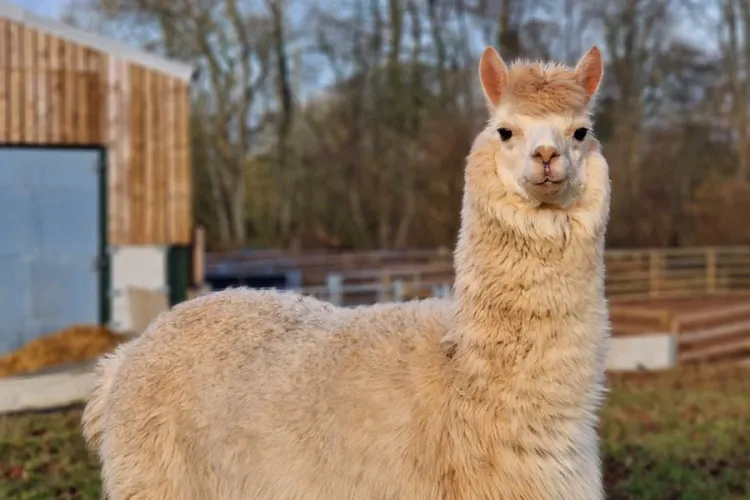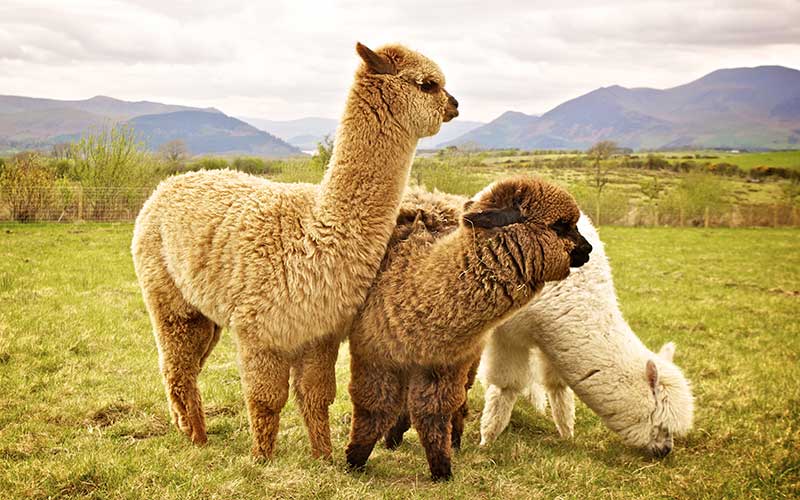Alpacas: Gentle Creatures with Luxurious Fiber...!!!
Alpacas are remarkable animals with a rich history and significant cultural and economic value.

Introduction to Alpacas
Alpacas are delightful domesticated animals celebrated for their soft, luxurious fleece. Native to South America, these creatures are closely related to llamas, vicuñas, and guanacos, all belonging to the camelid family. Alpacas have played a significant role in Andean culture for thousands of years, valued for their wool, companionship, and participation in traditional ceremonies.
Physical Characteristics
Compared to llamas, alpacas are relatively small, standing around 36 inches tall at the shoulder and weighing between 100 to 200 pounds. They possess a slender, graceful neck, large expressive eyes, and an inquisitive, gentle disposition. Their most notable feature is their fleece, renowned for its softness, warmth, and hypoallergenic qualities. Alpaca fiber is available in a wide range of natural colors, including white, beige, brown, black, and various shades of gray.
There are two breeds of alpacas: Huacaya and Suri. Huacaya alpacas have fluffy, crimped fleece that stands perpendicular to their bodies, giving them a teddy bear-like appearance. In contrast, Suri alpacas have long, silky, and lustrous locks that hang down in pencil-like curls.
Habitat and Distribution
Alpacas are indigenous to the high altiplano of the Andes Mountains in Peru, Bolivia, and Chile. They thrive in high-altitude regions with cool temperatures and low oxygen levels. Due to their adaptability, alpacas have been introduced to other parts of the world, including North America, Australia, and Europe, where they are bred on farms and ranches.

Diet and Feeding Habits
Alpacas are herbivores, primarily feeding on grasses, hay, and other vegetation. They have a unique digestive system with a three-compartment stomach that allows them to efficiently extract nutrients from fibrous plant material. Alpacas are also known for their gentle grazing habits, which cause minimal damage to pastures compared to other livestock.
Behavior and Social Structure
Alpacas are social animals that live in herds. They exhibit various behaviors to communicate with one another, including humming, body posturing, and ear positioning. Humming is their most common sound, often signaling contentment or curiosity. Alpacas can also produce warning sounds, such as a high-pitched scream, to alert the herd of potential danger.
Known for their gentle and friendly nature, alpacas are popular as companion animals. However, they can be protective of their herd and may spit when threatened or agitated. Spitting serves as a form of communication and a way to establish social hierarchy within the herd.
Reproduction and Lifespan
Alpacas typically live for 15 to 20 years. Female alpacas, known as hembras, reach sexual maturity around 12 to 18 months, while males, called machos, mature slightly later at 2 to 3 years. Alpacas have a unique reproductive process called induced ovulation, where mating triggers the release of an egg.
The gestation period for an alpaca is approximately 11 to 12 months, resulting in the birth of a single offspring, known as a cria. Crias are usually born during the daytime and can stand and nurse within a few hours of birth. Alpaca mothers are attentive and protective, nurturing their young until they are weaned at around 6 months of age.
Uses and Economic Importance
Alpacas are primarily raised for their fleece, which is sheared annually. The fiber is highly prized in the textile industry for its softness, warmth, and durability. Alpaca wool is used to create various products, including clothing, blankets, and accessories. Additionally, alpacas contribute to agritourism, attracting visitors to farms and ranches where they can interact with these gentle animals and learn about their care and husbandry.

Alpacas are remarkable animals with a rich history and significant cultural and economic value. Their gentle nature, unique behaviors, and luxurious fleece make them a cherished addition to farms and communities worldwide. Whether admired for their charming appearance or their contribution to the textile industry, alpacas continue to captivate and inspire those who encounter them.
What's Your Reaction?

















